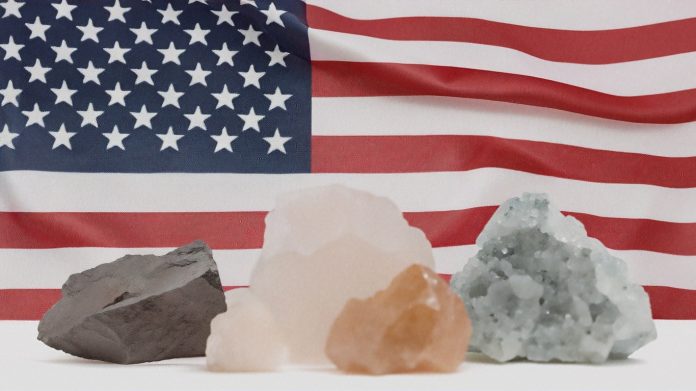The U.S. Department of Energy (DOE) has announced $5.5m in funding for six innovative projects focused on advancing sustainable and cost-effective processes to produce and refine critical minerals and materials domestically.
This initiative, funded by the Bipartisan Infrastructure Law, aims to reduce reliance on foreign critical minerals and materials sources by strengthening domestic supply chains while generating jobs and supporting communities historically reliant on mining and energy production.
Secretary of Energy Jennifer Granholm highlighted the significance of the funding: “Building a clean energy and industrial economy requires strategically tapping into our nation’s own reliable domestic resources to meet this demand and strengthen energy security.
“We are investing in alternative products that will be developed using more abundant and accessible materials, reducing our import dependency while lowering costs, increasing US competitiveness, and enhancing our national security.”
Reducing foreign dependency on critical minerals and materials
The US currently imports over 95% of the rare earth elements needed for various industries. Additionally, more than 50% of the supply for most critical minerals comes from foreign sources, and at least 12 critical minerals are exclusively imported.
The new projects seek to reverse this trend by developing technologies that use abundant domestic resources, thus enhancing US energy security and lowering costs.
Six innovative projects for alternative technologies
The ‘Critical Material Innovation, Efficiency, and Alternatives’ initiative will provide up to $150m in funding over multiple project rounds.
The initial six projects focus on alternative energy technologies using critical minerals and materials sourced domestically.
These projects represent a significant step toward building a more robust supply chain for critical minerals and include:
- CorePower Magnetics aims to develop and prototype a high-performance electric motor that eliminates the need for rare earth elements. The team will evaluate various rare earth element-free permanent magnet technologies for their performance and production readiness.
- Giner, Inc. plans to develop lower-cost rechargeable batteries for electric vehicles, using domestically available materials such as manganese, iron, titanium, and magnesium, reducing dependence on critical elements like copper and nickel.
- Ohio University’s project will focus on creating coal-derived hard carbon anodes for a next-generation sodium-ion battery, offering a lower-cost alternative to lithium-ion batteries that require critical minerals sourced primarily from outside the US.
- Semplastics will use low-cost coal feedstocks to develop an alternative anode active material that can serve as a graphite substitute in lithium-ion batteries, improving the domestic availability of key components for grid storage batteries.
- The University of Tennessee will develop a rechargeable alkaline-manganese dioxide battery, focusing on environmentally friendly electrolytes and US-sourced materials as an alternative to lithium-ion technology.
- Worcester Polytechnic will create a process to convert pure or mixed nickel-lean polycrystal cathode materials into nickel-rich single crystal cathode materials for advanced battery applications.
DOE’s commitment to expanding critical minerals and materials
In addition to these new projects, the DOE’s Office of Fossil Energy and Carbon Management (FECM) has committed $171m since January 2021 toward supporting critical minerals exploration, production, and processing, particularly in traditional mining and energy-producing regions.
These efforts aim to minimise environmental impacts while supporting the US transition to a net-zero emissions economy.
By investing in innovative approaches to develop and refine critical minerals and materials, the DOE is ensuring a more secure, sustainable energy future for the United States, reducing reliance on foreign resources, and strengthening the domestic economy.









